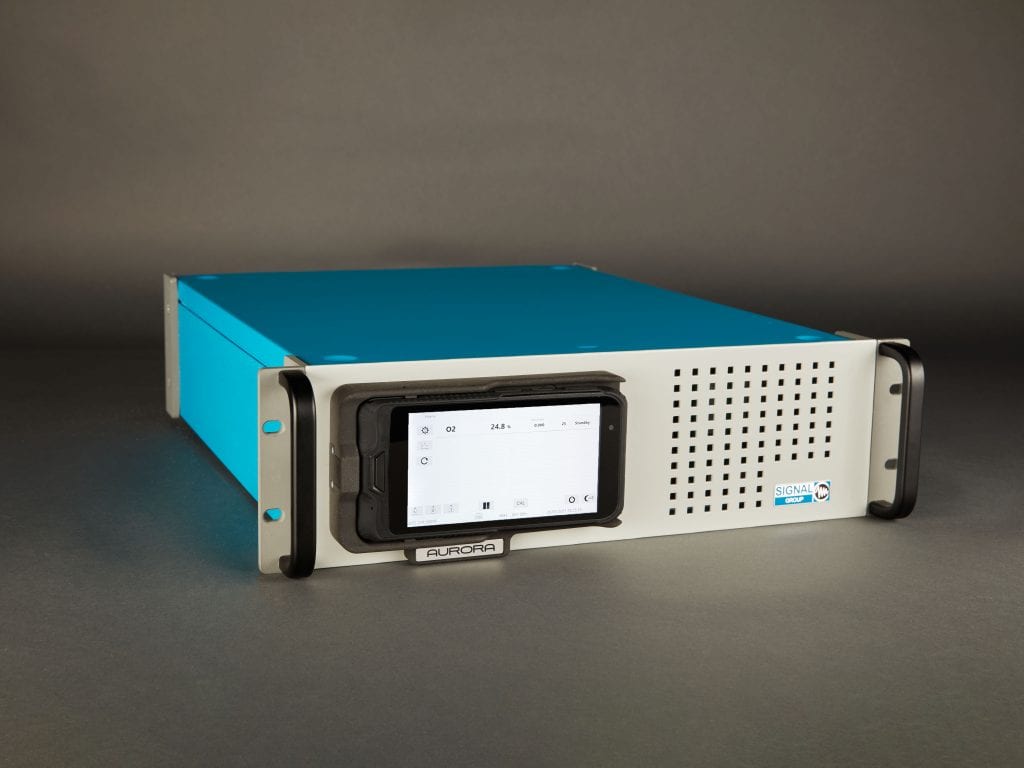
Signal Group, the UK gas analyser manufacturer, has seen a growth in demand for reference-grade analysers that are able to differentiate between total VOCs (volatile organic compounds) and Non-Methane VOCs (NMVOCs). “This demand is largely driven by domestic regulatory requirements, where countries are seeking to control emissions of both pollutants and gases that impact climate change,” explains Signal’s Stephane Canadas. “NMVOCs are important pollutants whereas methane is a major Greenhouse Gas, which is why the differentiation is often necessary.”
For decades Signal Group has manufactured analysers with dual Flame Ionisation Detectors (FIDs), so that total VOCs and NMVOCs can be monitored simultaneously. In addition, the company has also developed a ‘non-methane cutter’ so that methane can be measured in isolation.
Background
Methane is a VOC and contributes to ozone formation on a global scale rather than in local photochemical smog episodes. Methane is also non-toxic, so it is often excluded from pollution measurements. Nevertheless, methane is a major concern with regard to climate change, because it is a powerful greenhouse gas, with a global warming potential 72 times greater than carbon dioxide over a 20-year period. Furthermore, atmospheric methane concentrations have increased by around 150% since 1750.
NMVOCs are organic compounds that differ significantly in their chemical composition but display similar behaviour in the atmosphere. NMVOCs are emitted from a large number of sources including combustion activities, solvent use and production processes. However, biogenic NMVOCs are also emitted by vegetation. The measurement of total NMVOC emissions provides an indicator of the emissions of the most hazardous NMVOCs.
Volatile organic compounds (VOCs) are significant air pollutants because they act as precursors to tropospheric (ground level) ozone and secondary organic aerosols (particulate matter), both of which represent significant health hazards. In recent decades, many countries have successfully reduced emissions from road vehicles and other evaporative losses of VOCs from fuels (including natural gas) during their production and distribution. However, further reductions in VOC emissions are required for countries to meet their obligations under the National Emission Reduction Commitments Directive (by 2030) and the UNECE’s Convention on Long-range Transboundary Air Pollution. In addition, many countries around the world have implemented domestic regulations with requirements to monitor and control emissions of NMVOCs.
In many countries NMVOC emissions have declined in recent decades as a result of a number of factors. Vehicle catalytic converters have reduced exhaust emissions, and carbon canisters on petrol cars have controlled evaporative emissions. These reductions have been driven by tighter vehicle emission standards, combined with limits on the maximum volatility of petrol. Reductions have also occurred in sectors where solvents are used in industrial processes, or where solvents form a component of the final product – paints, coatings, adhesives and cleaning chemicals for example.
Looking back
Monitoring has of course played a vital role in helping to reduce emissions of NMVOCs. In 1980 Signal Group delivered its first dual detector FID gas analyser to the Warren Spring Laboratory, which was then part of the UK government’s Department of Industry. In those days, Signal worked closely with the Royal Aircraft Establishment and the National Gas Turbine Establishment; both of which contributed to the design of the dual detector FID and a methane cutter. The cutter contained a catalyst which oxidised all VOCs except methane, so a dual FID instrument was able to continuously subtract one reading from the other in order to derive NMVOC readings.
In the early years some customers preferred a single detector which alternately switched the sample through the cutter for a period of time and took the reading to a ‘sample and hold’ circuit and then switched the sample to bypass the cutter; sending the sample directly to the detector. The ‘sample and hold’ circuit continuously held the last readings in both modes and allowed the subtraction of methane from total VOC to provide the NMVOC result. There are obvious disadvantages with this method if the sample concentration is changing rapidly.
Looking forward
Over the last 40 years, advances in electronics and instrument design have enabled Signal Group to further develop its range of VOC analysers. Stephane says: “The main areas of improvement were stability, ease of use, accuracy and reliability. However, the fundamental principles of operation behind the FID analysers and the cutters remain very similar.”
The FIDs are extremely stable because the flow of fuel, air and sample are very accurately controlled with proportional electronic flow controllers. In addition, the stability of the electronic amplifiers has advanced enormously. Potential errors due to range-switching are nullified because these instruments are now able to remain in one range thanks to a 32-bit microprocessor and a built-in algorithm which ensures that both detectors align during the calibration of the dual analyser.
Commenting on the company’s latest development, Stephane Canadas says: “Our new Series 4 analysers are possibly the company’s most innovative yet because they are available with a detachable tablet instead of the traditional built-in screen.
“This means that customers will no longer have to manage their analysers, while standing, sitting or squeezing into inconvenient or even hazardous locations; now they will be able to operate their equipment wirelessly from a convenient location nearby, using the instrument’s built-in Wi-Fi.”
In addition to wireless connectivity between the analyser and the tablet, all Series 4 instruments are supplied with software providing secure access via RS232 or Ethernet at any time, from anywhere. “This remote connectivity means that users can configure, calibrate and monitor their analysers from anywhere and at any time, whether they need to measure total VOCs, NMVOCs or both.” Stephane explains. “The growth in demand for analysers that can differentiate between NMVOCs and methane can be explained by the need to use a reliable reference method to undertake measurements without the high cost and complication associated with analytical technologies that are able to speciate individual VOCs.”
View our S4 Analysers here.


